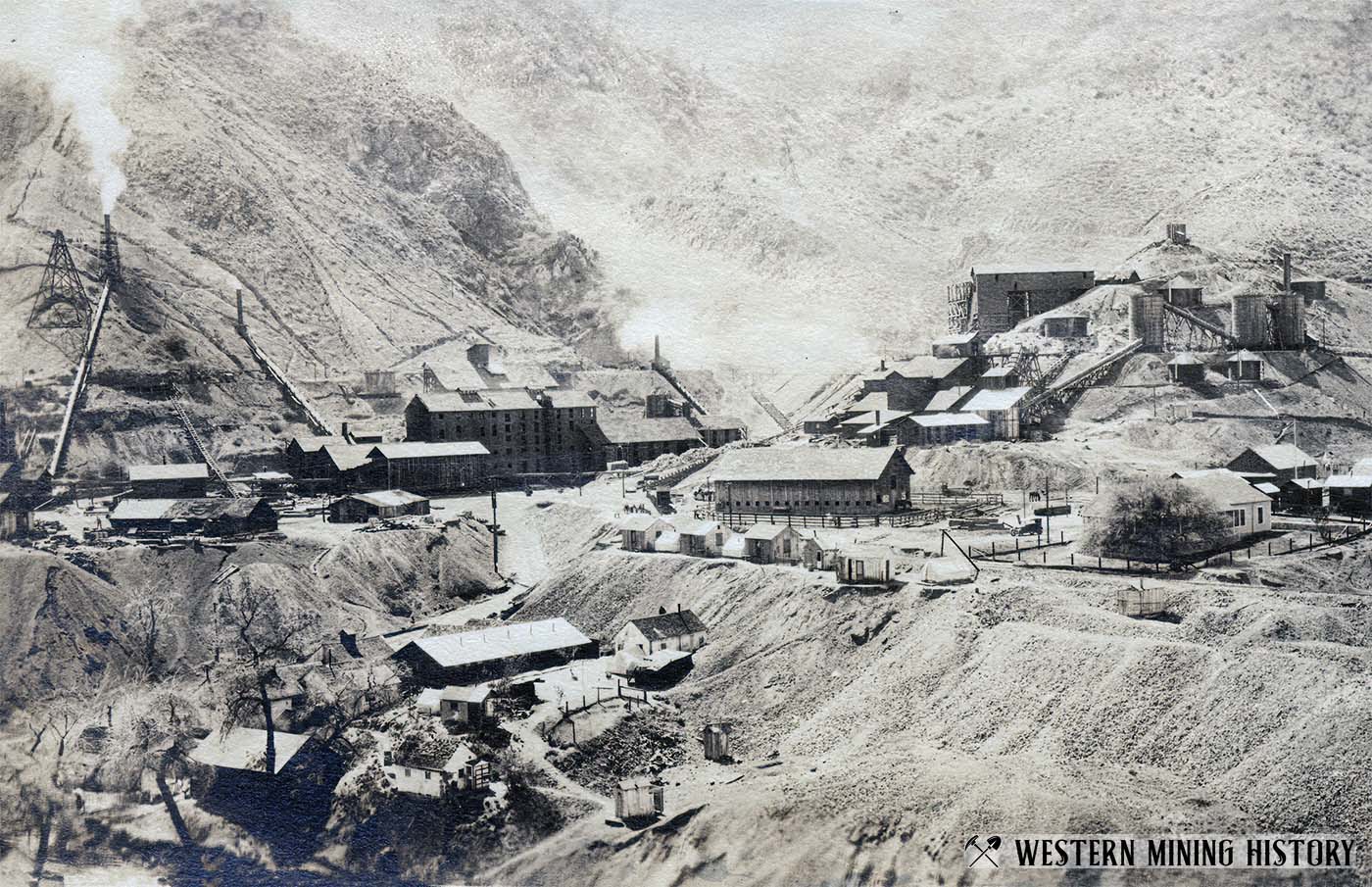New Idria History
Note: quicksilver and mercury are the same metal. Quicksilver was a more common name in the past, but it is usually referred to as mercury in the modern age.
New Idria was the nation's second largest producer of quicksilver, second only to New Alamden. While New Almaden was named after the world's largest producer of quicksilver in Spain, New Idria was named after the world's second largest producer at Idria, Austria.
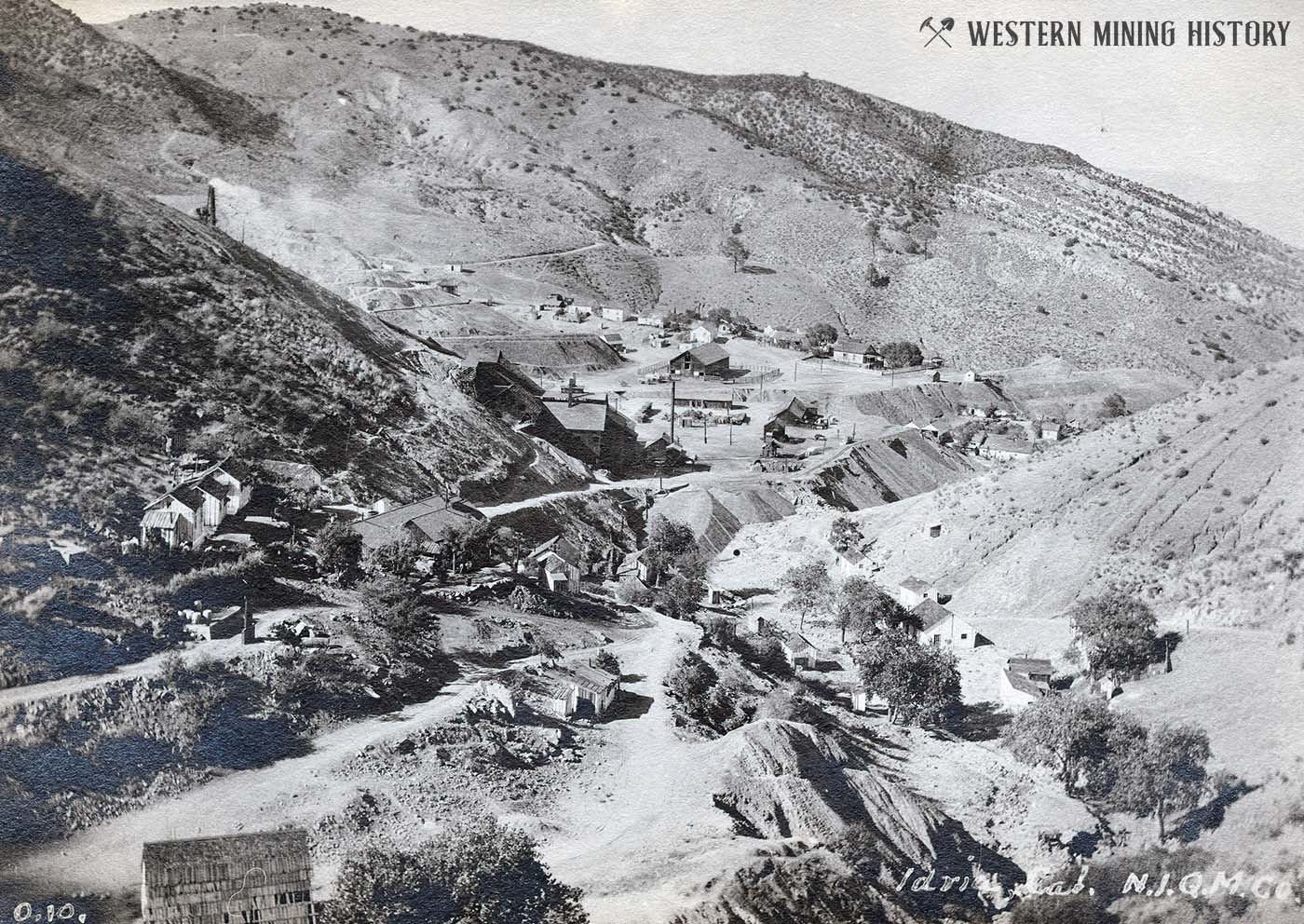
The mining of quicksilver ore (known as cinnabar) began at this location in 1850, and by the end of the decade several hundred miners were working the mine and living in the community of New Idria. A post office was established here in 1869. In 1894 the name of the post office was updated to just "Idria".
New Idria was located in a rugged mountainous region characterized by numerous deep canyons. In the early 1870s, legendary outlaw Tiburcio Vásquez led a gang of highwaymen that had their headquarters in Cantara canon, near the New Idria quicksilver mines.
By World War I, New Idria had surpassed New Almaden as the nation's largest producer of quicksilver. Unfortunately details of the town of New Idria are sparse, but it must have been a significant community during this period.
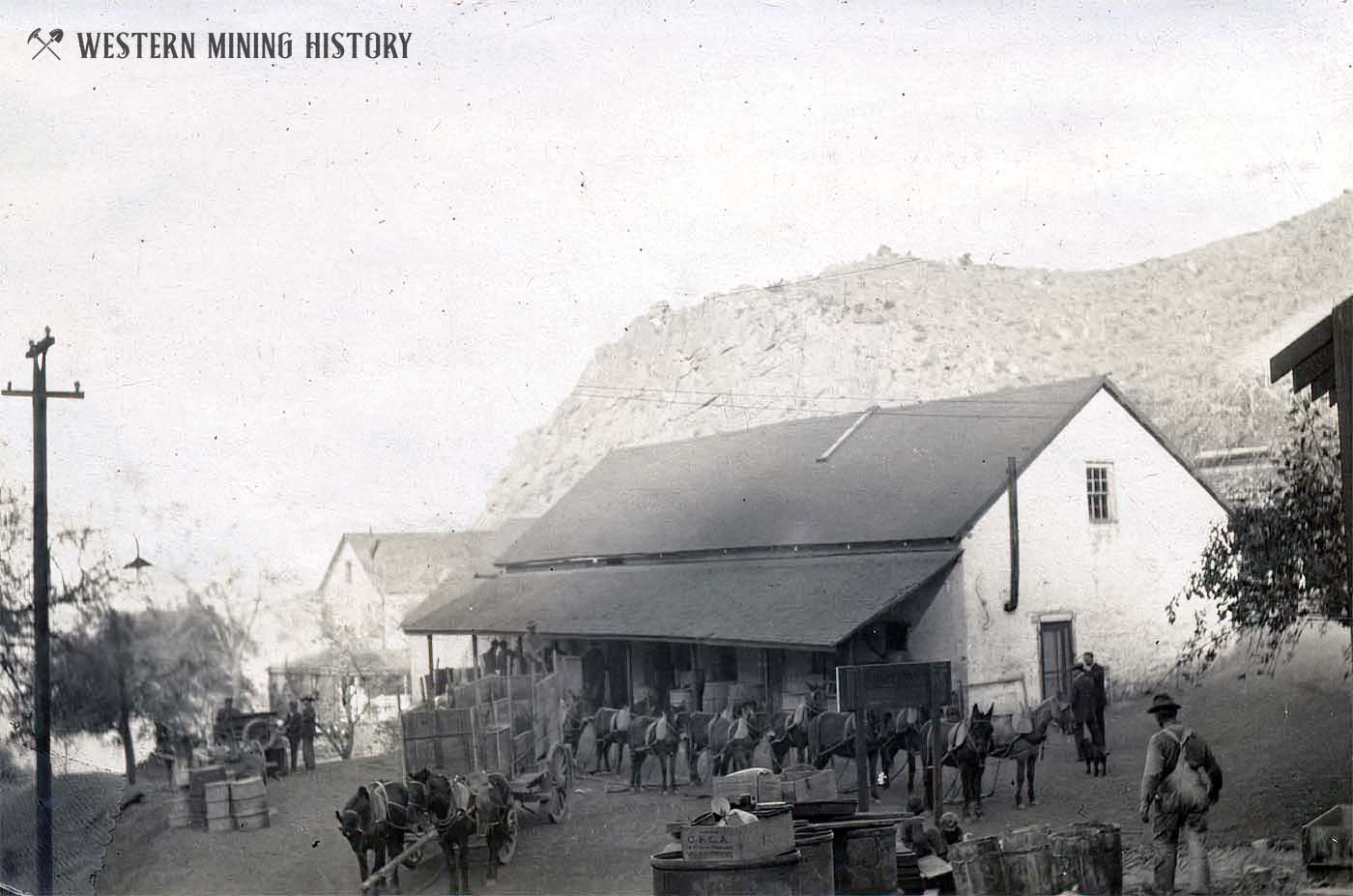
The New Idria quicksilver mine closed in 1972. The post office closed in 1974. Ultimately over 38 million pounds of mercury were produced here. The area has been designate as an EPA superfund site, and is now fenced off with no public access.
The Mines of New Idria
The New Idria mine was an extensive enterprise that operated for over a century. By 1917 the works here included several adjacent mines that were connected by adit and aerial tram. Over 30 miles of tunnels were developed within the twenty levels of the mine. The 1918 publication Quicksilver Resources of California by the California State Mining Bureau detailed some of the mine workings–selections from that report are included below.
The mine workings are complicated and numerous, due to the irregularity of the ore shoots. Considerable timbering is required, especially in the larger stopes, where the square set system is employed. The stope shown below is 5 sets (6 feet each) wide, or 30 feet. Others are up to 50 feet square.
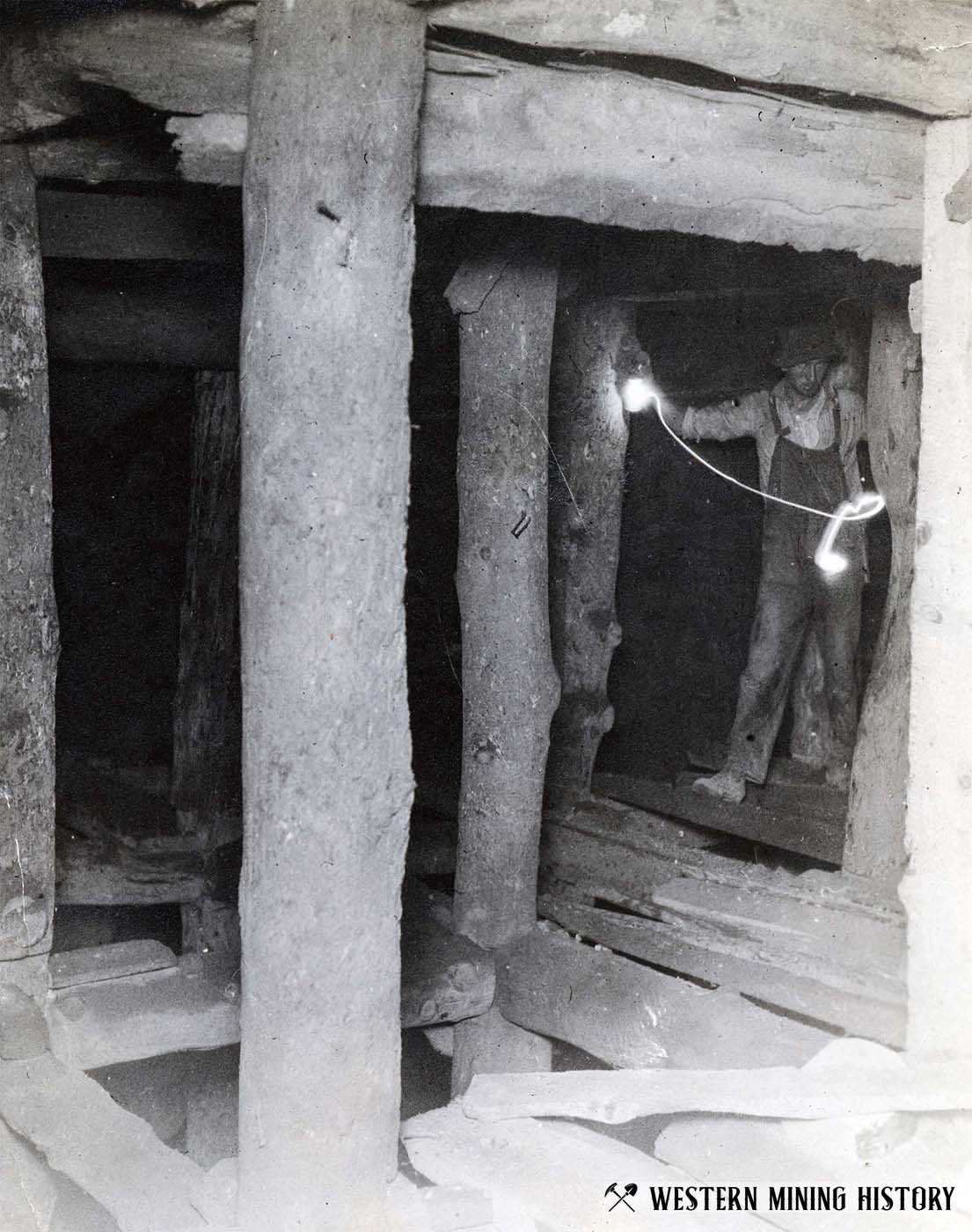
Development is mainly by adits, with connections by raises and winzes. There are ten main levels, No. 1 to No. 10, and a number of intermediates. The No. 10 tunnel, which is the main haulage way for delivery of ore to the furnaces, is 3,175 feet in length to the vein, at which point it is 1,060 feet vertically below the outcrop.
There is a total of 15 to 20 miles of underground development (as of 1917) in the company's property, including 5,000 feet in the San Carlos, 5,000 feet in the Molino, 600 feet in the Creek tunnel and over 3 miles of open working tunnels (crosscuts) in the New Idria. The system of mining in use is that of overhand stoping, and timbering with square sets. Pneumatic stopers and drills are employed; and a certain amount of hand-sorting is done within the mine.
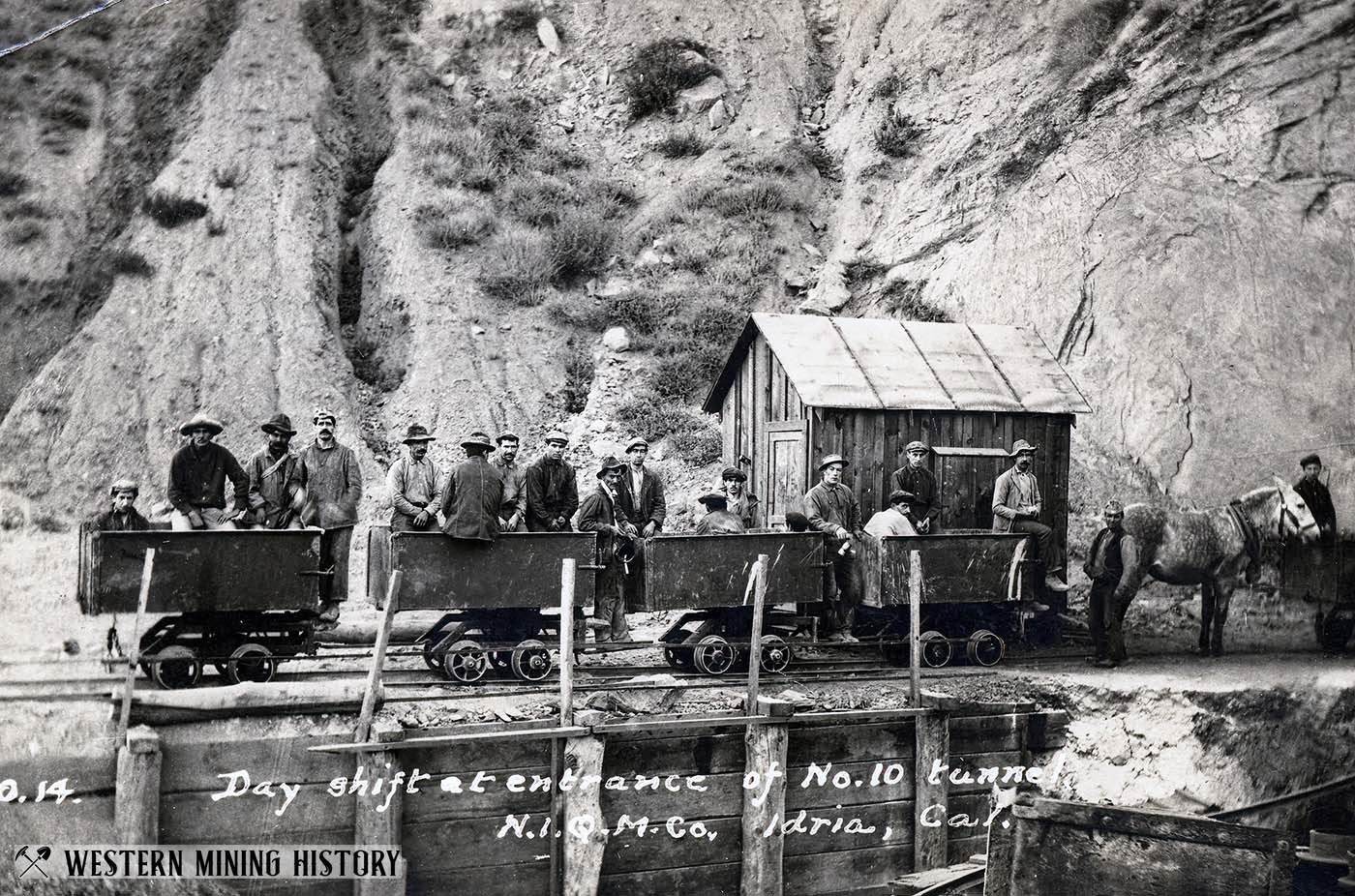
On the No. 10 level, ore cars are loaded and hauled in trains to the furnaces. The no. 10 adit is a mile in length from the chutes to its portal. Formerly mules were used for motive power, but have been superseded by a 16 h. p. Edison storage-battery locomotive, for underground haulage; while a Ford gasoline motor is used for surface haulage. The hot ore discharged from the furnaces is hauled to the dumps by mule-drawn trains.
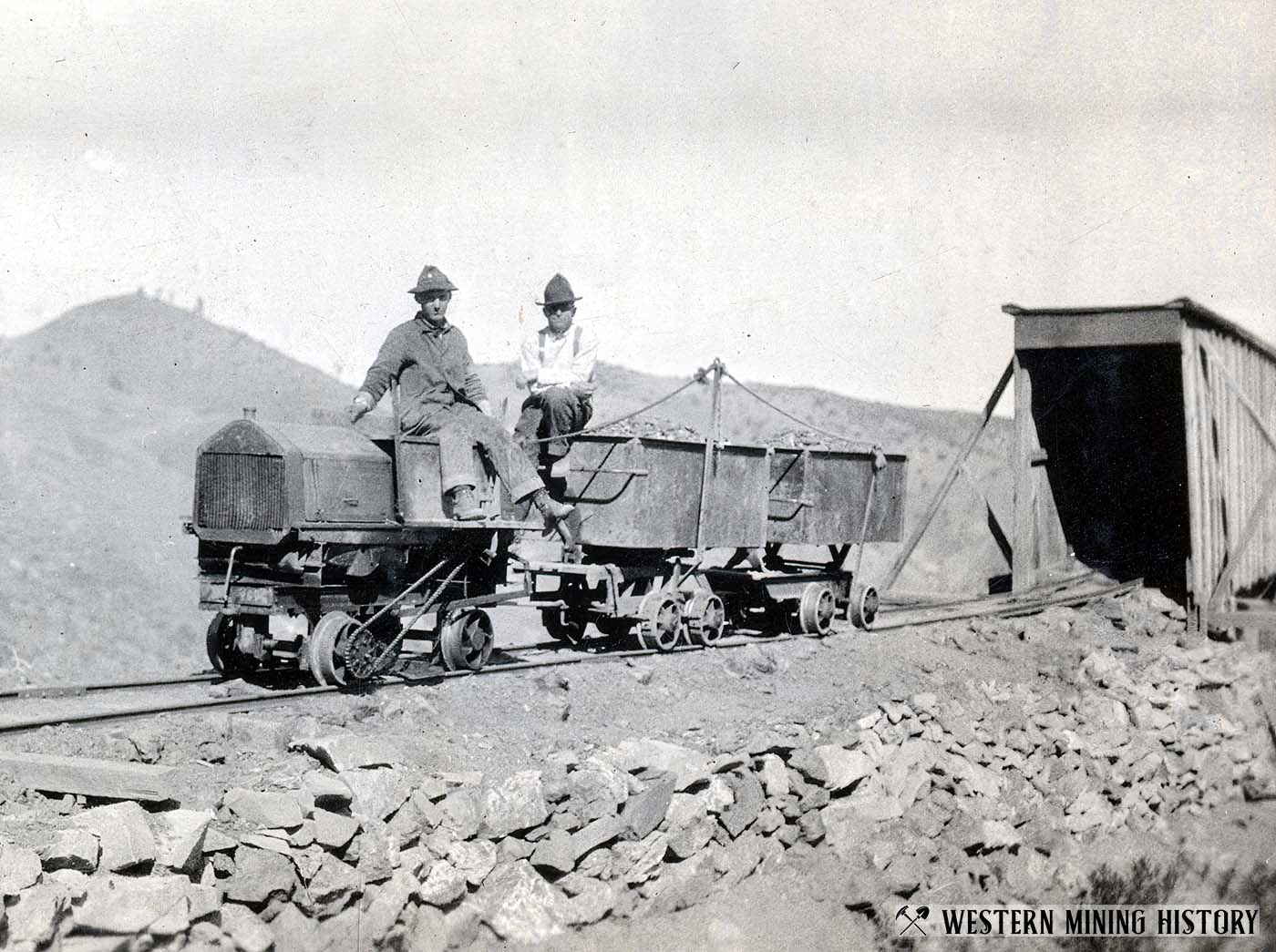
At the portal of #2 level there was formerly a steam-driven sawmill of 2,000 board-feet daily capacity. Round timbers were used-both pine and cedar-some being cut on land owned by the company and some also at a point 11 miles to the south of Idria, within the Monterey National Forest, under contract with the U. S. Forest Service. At present, sawed timbers, cut to dimensions, from Santa Cruz, are hauled in by motor trucks from the railroad at Tres Pinos. This freighting is contracted at $10 per ton from Tres Pinos to #2 level.
Equipment at #2 level portal includes a timber framer driven by a 9 h. p. distillate engine. There is also a saw especially set for cutting wedges. The blacksmith shop, here, is equipped with a Waugh drill sharpener. The #2 adit is the main entry to the mine for timbers and other supplies, from which they are distributed to the levels below by means of the winze and hoist previously mentioned.
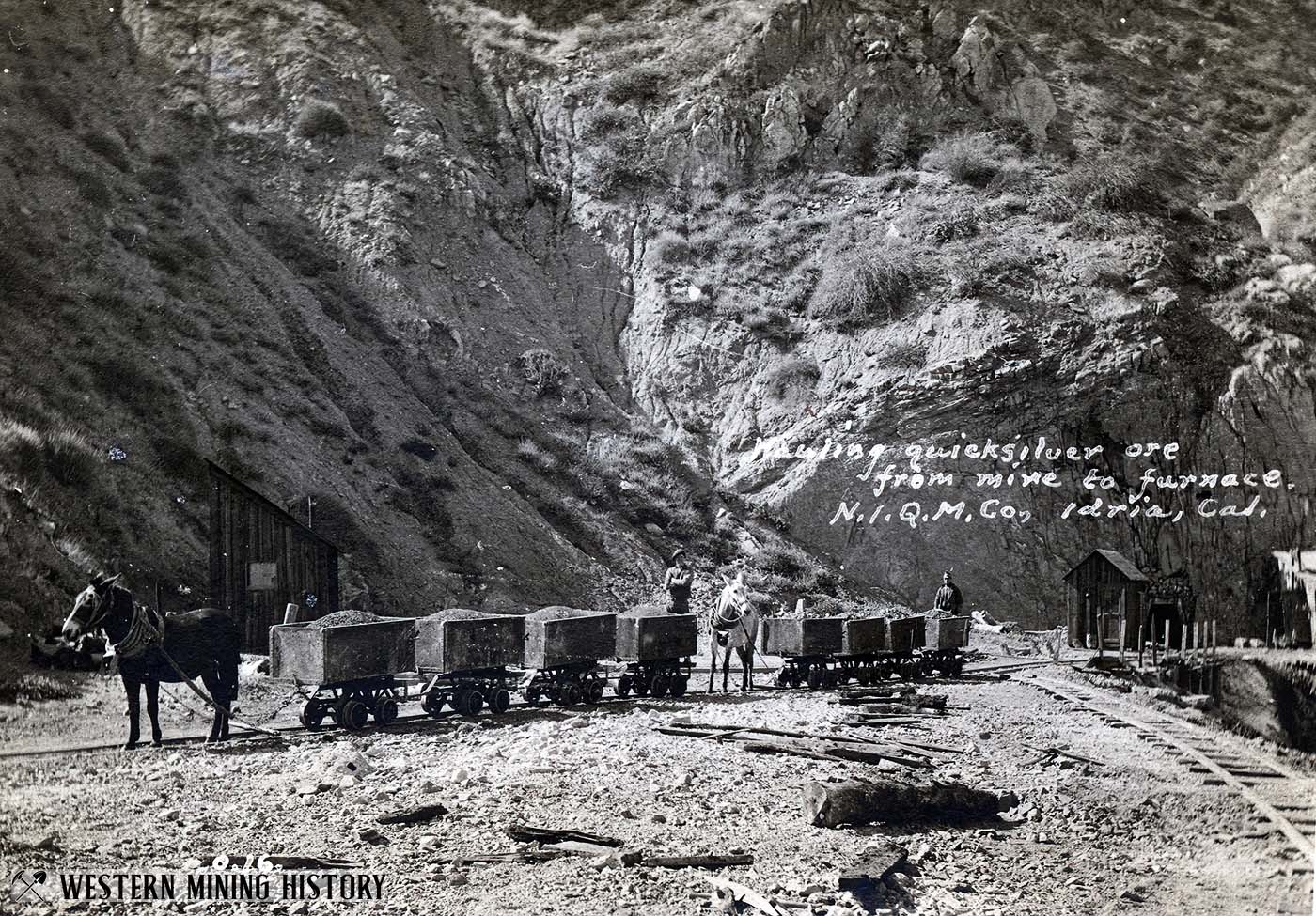
The power-house is situated around the hill to the left of the Scott furnace. There are two semi-Diesel engines, Type Y, Fairbanks-Morse, 75 h. p. and 50 h. p., respectively, direct-connected to a common line shaft, which drive the compressor, also a 60 k. w. generator for lights and furnace blowers. These are also boosted by a water-wheel.
It All Started With The Gold Rush
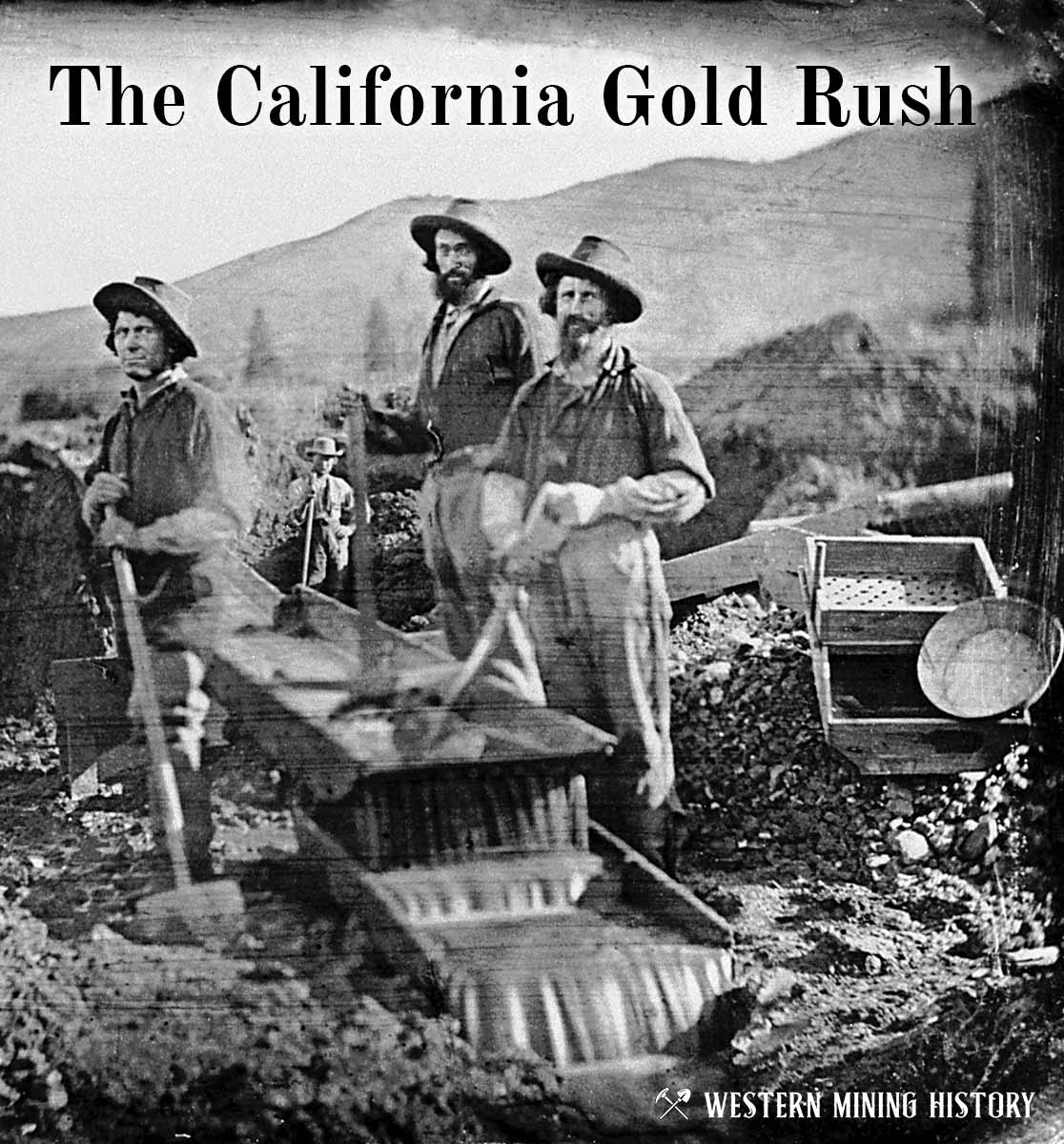
The great California Gold Rush kicked off the entire saga of western mining. Read about it at The California Gold Rush.
California Gold
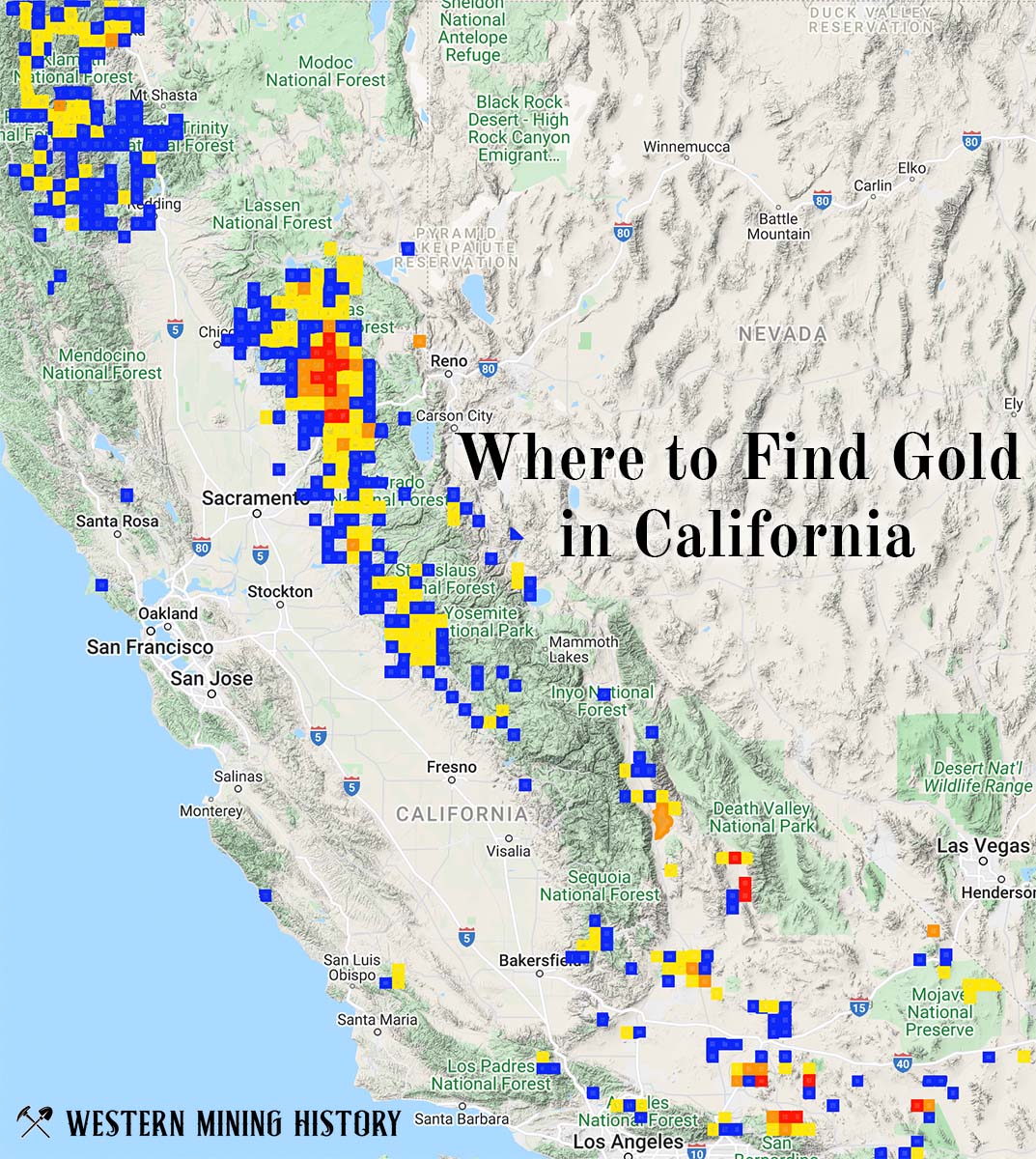
"Where to Find Gold in California" looks at the density of modern placer mining claims along with historical gold mining locations and mining district descriptions to determine areas of high gold discovery potential in California. Read more: Where to Find Gold in California.
